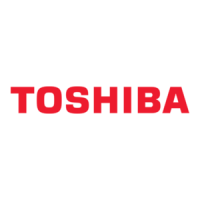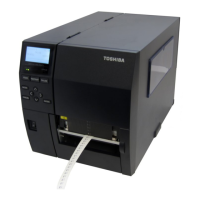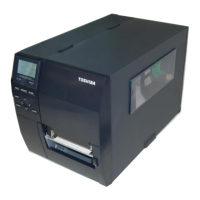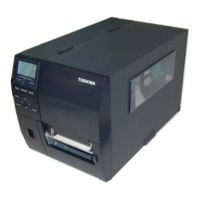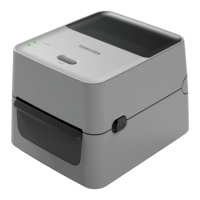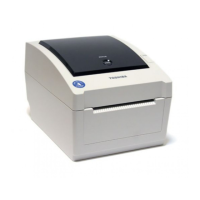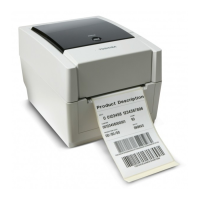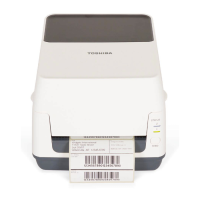
Do you have a question about the Toshiba B-EX6T Series and is the answer not in the manual?
| Resolution | 203 dpi (8 dots/mm) |
|---|---|
| Power Supply | AC 100-240V, 50/60 Hz |
| Print Method | Thermal Transfer / Direct Thermal |
| Interfaces | USB, Serial (RS-232) |
| Optional Interfaces | Wireless LAN, Bluetooth |
| Memory | 128 MB (Flash ROM) |
| Operating Temperature | 5 - 40 °C |
| Storage Temperature | -20°C to 60°C (-4°F to 140°F) |
| Humidity | 85% RH (non-condensing) |
Provides a visual guide to the printer's control panel and key layout.
Describes the primary operating mode for users and its functions.
Details the user-accessible mode for frequent settings and adjustments.
Explains the function of each key within the online mode.
Explains the meaning of icons shown on the online mode screen.
Describes the purpose and automatic parameter setting of RFID calibration.
Explains how to view and print feed amount data.
Details how to cancel print jobs and reset the printer.
Describes the use of list boxes and scrollbars for menu selection.
Details how to enter the system mode and its general functions.
Explains how to print or display self-diagnosis results and maintenance counters.
Explains how to configure media feed behavior for different printing scenarios.
Explains how to set heat energy types for different supplies.
Details fine adjustment for the front ribbon motor torque.
Details parameters that can be set for test printing.
Explains how ambient and print head temperatures are displayed.
Covers the process of adjusting reflective and transmissive sensors.
Details manual and command-based threshold selection for transmissive sensors.
Details the adjustable range for reflective sensor thresholds.
Details which maintenance counter data is cleared.
Covers configuration for wired and wireless network connections.
Explains how to perform read tests on RFID tags.
Sets the distance for retrying RFID tag write operations.
Covers the number of retries and timeout for RFID tag reads.
Sets the radio output power level for UHF RFID.
Explains how to enable or disable error tag detection.
Explains how to set the date and time when the RTC module is installed.
Details copying firmware and configuration files from USB to the printer.
Describes the test for the head-up solenoid.
Details the LCD and LED tests performed during panel testing.
Explains how to enable or disable the BASIC interpreter.
Details managing BASIC programs stored in the printer.
Explains how to select the display language for the LCD panel.
Controls whether the model name is shown on the LCD.
Controls whether the label count is shown on the LCD.
Controls whether the IP address is shown on the LCD.
Details how to set and enter passwords for mode access.
Details how to enter user system mode and its general purpose.
Explains the purpose and basic steps of auto configuration.
Specifies the format of the configuration file.
Explains how model information is stored in the config file.
Details the format of messages displayed during auto configuration.
Specifies the naming convention for firmware files.

